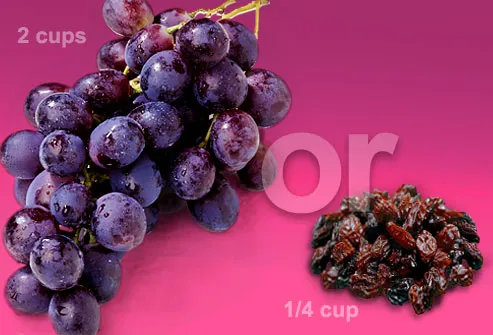My weight-loss secret: Volumetrics...
The Volumetrics Eating Plan is based on a basic fact: people like to eat. And if people are given the choice between eating more and eating less, they'll take more almost every time.
Unlike diets that are based on deprivation, the Volumetrics diet doesn't try to fight this natural preference. You'll just wind up hungry and unhappy and go back to your old ways.
Energy density is the number of calories in a specified amount of food. Some foods -- especially fats -- are very energy dense. If you eat foods with high energy density, you rack up calories quickly. If you go with less energy dense foods, you can eat more and get fewer calories.
Very low-density foods include:
- Non-starchy vegetables
- Nonfat milk
- Soup broths
Very high-density foods include:
- Crackers
- Chips
- Cookies
- Chocolate/Candies
- Nuts
- Butter
- Oils
Volumetrics relies heavily on foods with a high water content -- such as many vegetables and fruits -- since they will fill you up without adding a lot of calories.
Eating lots of foods with filling fiber, along with adequate portions of lean protein and some healthy fats from fish and other sources is the aim. Of course, energy-dense foods -- like lollies, fats, and alcohol -- are still allowed. You just have to eat them sparingly.
While the hook of Volumetrics is clever, it essentially boils down to the sensible diet that any nutritionist would recommend: lower-calories, lower-fat, with lots of vegetables and fruits.
The concept of energy density
For weight control, your best bets are healthy foods that provide low energy with high volume. By choosing foods that are low in calories, but high in volume, you can eat more and feel fuller on fewer calories. Certain foods, such as fruits and vegetables, tend to be low in energy density — they're low-calorie foods.
So what about raisins? They actually have a high energy density — they pack a lot of calories into a small package. For example, 1/4 cup of raisins has about 100 calories.
Get more for your calories
For about the same number of calories as 1/4 cup of raisins, you could eat 1 cup of grapes. Grapes — and foods like them — are good for weight control because you get a relatively large amount of food for your calories.

High vs. low energy density
Foods high in energy density include fatty foods, such as many fast foods, and foods high in sugar, such as sodas and candies. Consider that a small order of fries from McDonald's has about 230 calories.
A more filling option
For about the same calorie count, you could replace that small order of fries with heaping helpings of fresh fruits and vegetables — such as 10 cups of spinach and a small apple and 1 1/2 cups of strawberries. And with fresh fruits and vegetables, you get a heap of valuable nutrients — not just empty calories. These foods also take longer to eat and are filling, which helps curb your hunger.
Breakfast: Do's and donuts
A single large glazed doughnut is about 315 calories. Will that keep you going all morning?
A better breakfast
For the same number of calories as that doughnut, you could have a bowl of bran flakes with skim milk, blueberries and a slice of whole-wheat toast with peanut butter.
Lunch on the run?
You could grab a chococlate bar for a lunch on the run. That's about 280 calories.
A lunch to keep you going
Or you could have a pita stuffed with low-fat chicken salad for about the same number of calories.
Dinner time
A cheeseburger for dinner? That's nearly 600 calories.
A real meal
For the same calories, wouldn't you rather have a meal — soup, sandwich, fresh fruits and veggies? By choosing healthy, low-calorie foods you can take in fewer calories while still squelching those hunger pangs.
Don't forget to pack snacks
Energy density is also important when you're snacking. If you're working on weight loss or maintenance, you want to keep your snacks at about 100 calories. One ounce of potato chips is about 150 calories.
A snack that packs a punch
Or for about 100 calories, you could snack on 3 1/2 cups of air-popped popcorn.
Practice with your plate
To make this way of eating work for you, let your plate be your guide. Fill half of your plate with veggies, one-quarter with whole grains and the other quarter with a small serving of lean protein. This is a simple way to ensure you have filling, healthy meals.
Need a sweet ending? Try fresh fruit and yogurt as a tasty low-calorie alternative to a slice of cake.
Resources: WebMD




0 comments:
Post a Comment